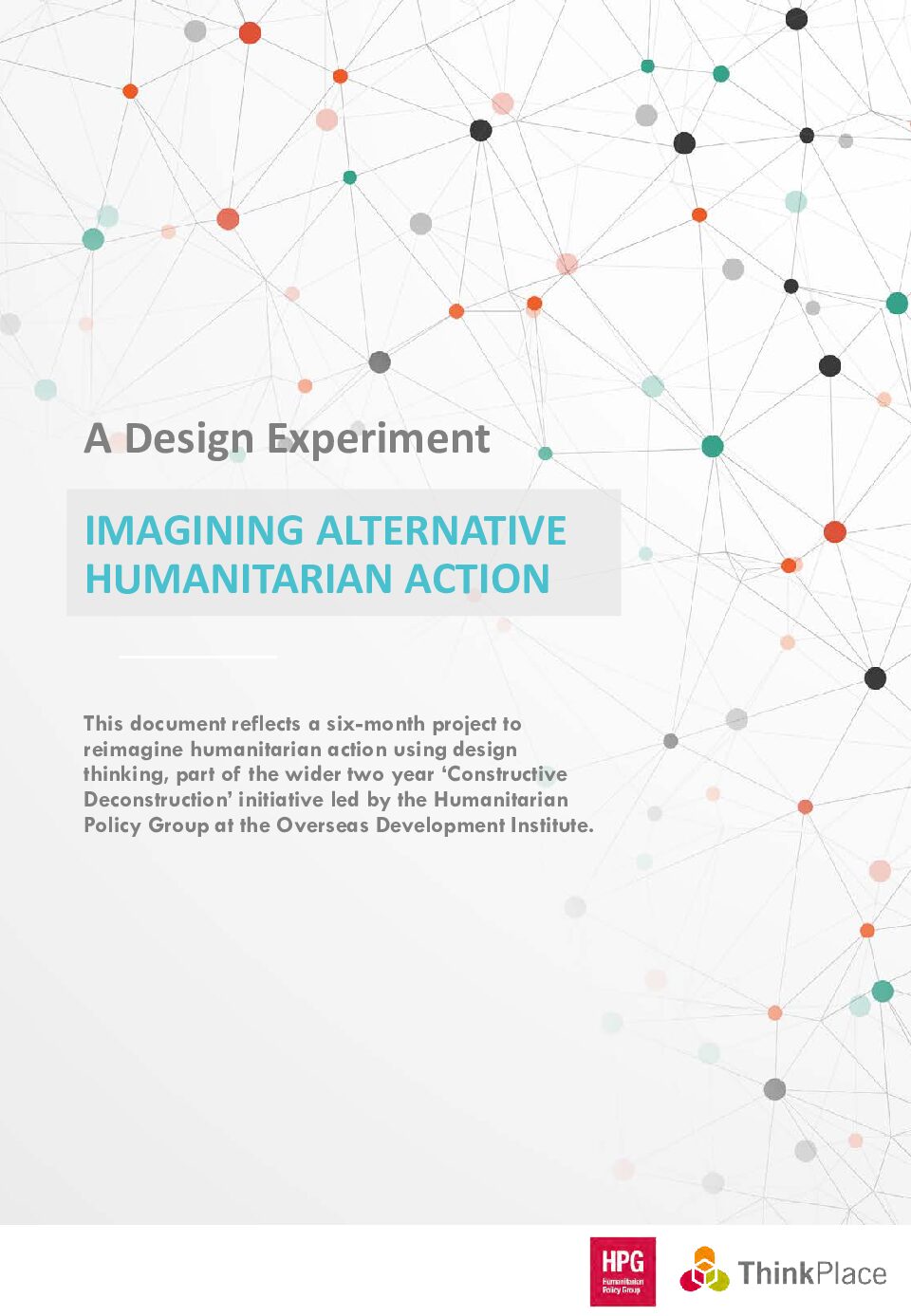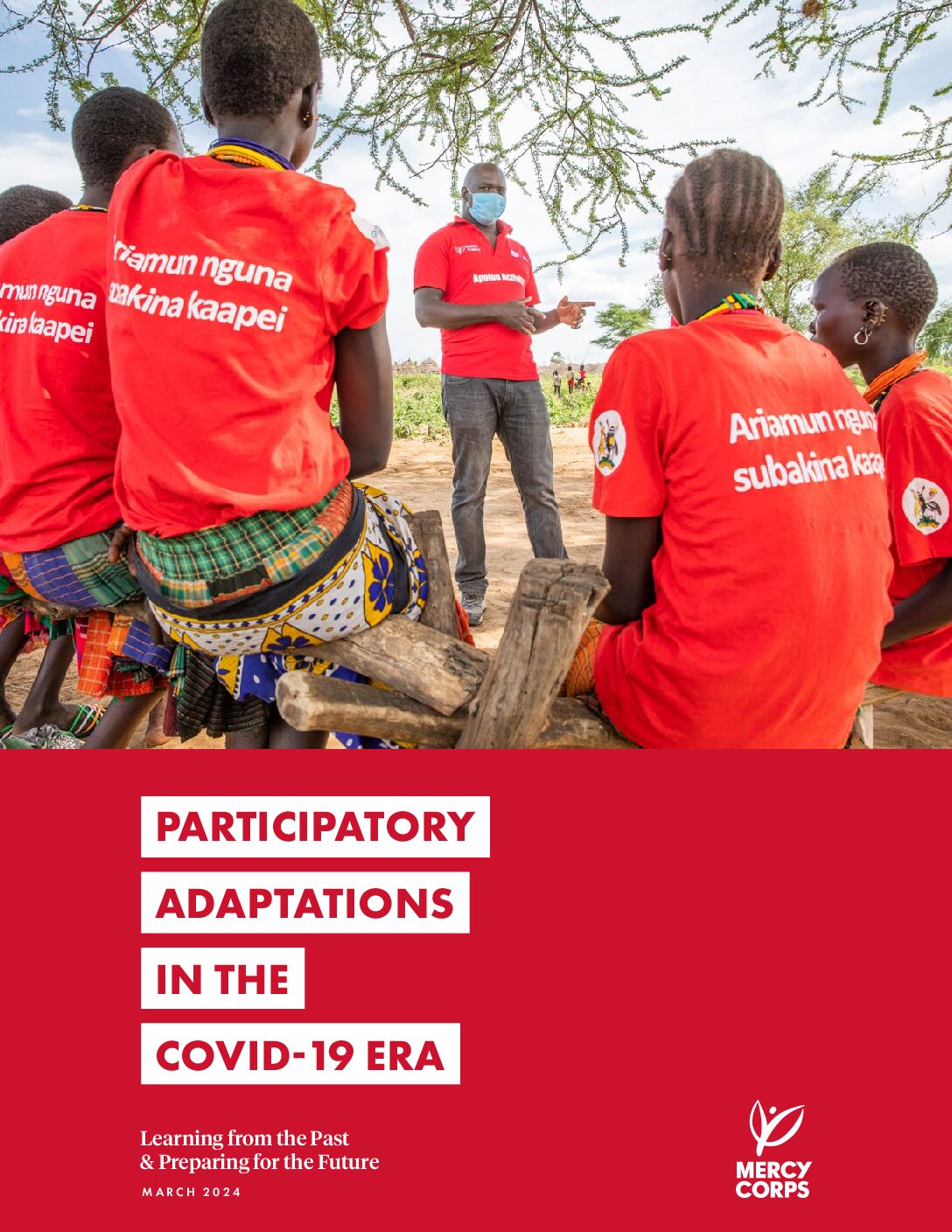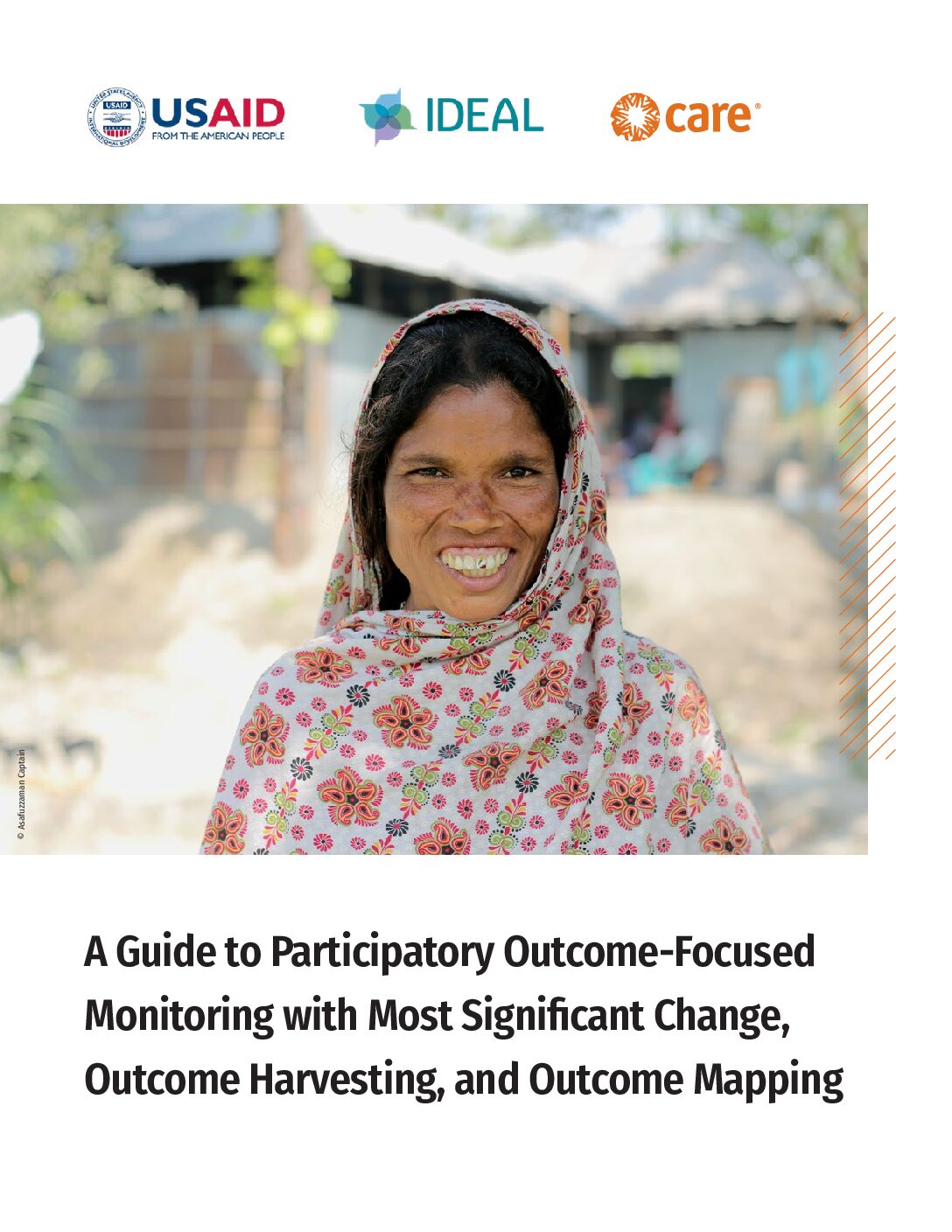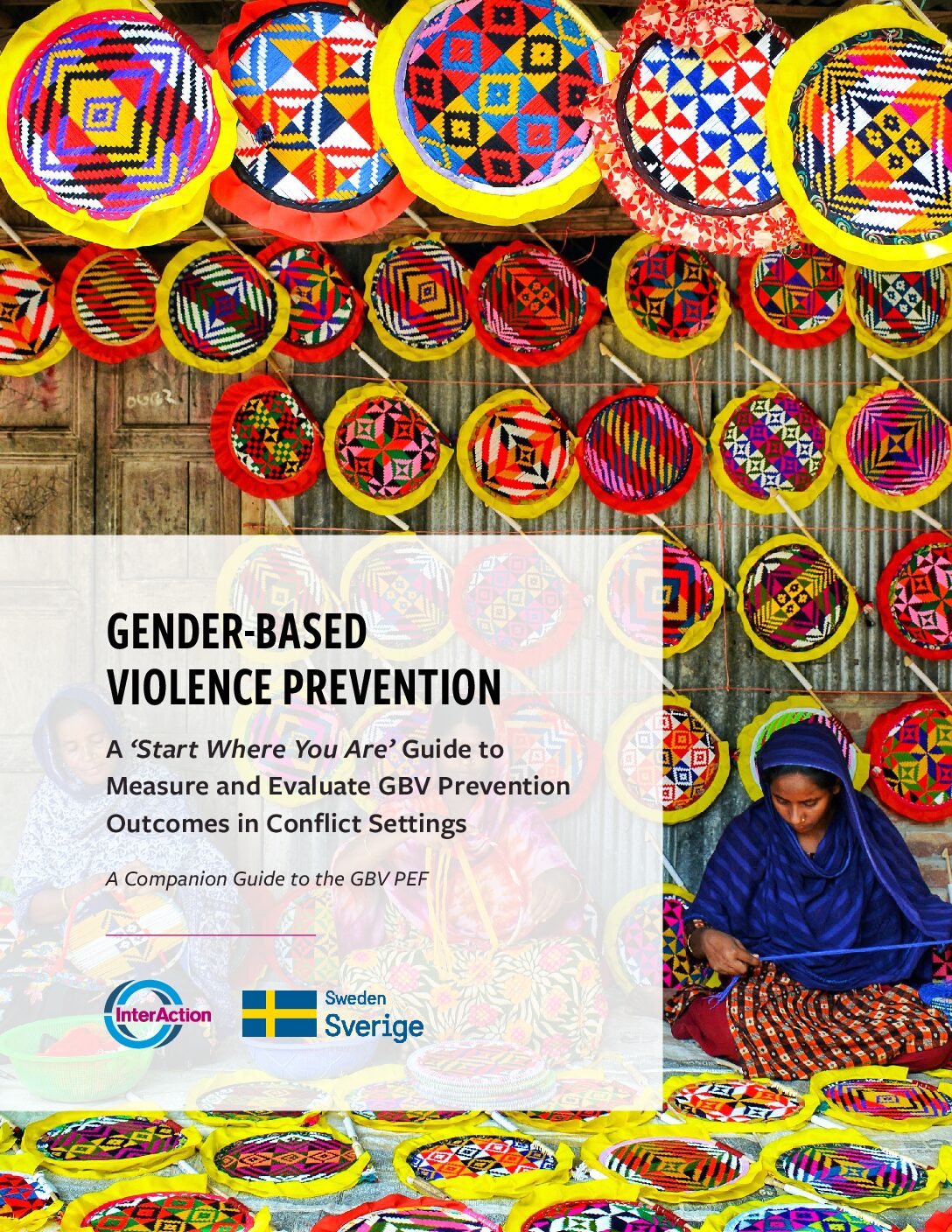Building on the Humanitarian Policy Group’s (HPG) work on remaking humanitarian action for the modern era, HPG, along with their partner ThinkPlace, initiated a design thinking experiment to capture ideas and discussions of major stakeholders to reimagine humanitarian action. The approach aimed to map people’s actual experiences and use those experiences to envision how international humanitarian action might become adaptable and accountable in ways that recognize people affected by crisis as the agents of change in their own lives. Both the vision articulated in the Design Guide, as well as the process for developing it, illustrate key elements of results-based protection as a way of appreciating and addressing complexity in problem solving for humanitarian outcomes.
The process
This design guide documents people’s stories and reflections, and frames both challenges and opportunities, barriers and enablers in a human-centered way that is creative, anchored in human connection, and focused on user perspectives and experiences. The design-thinking and co-design methodology was designed to be inclusive and iterative, as the team convened a group of experienced humanitarian practitioners, refugees and other crisis-affected communities alongside people from the private sector, finance, academia and the media as co-designers. The process started with creating a shared understanding of the vision and objective, followed by a process of rapid exploration and innovation, and formulation of the vision of the ‘future humanitarian state’.
The below questions summarize the framework for this design inquiry; however, the approach utilized methods of storytelling to illicit personal stories and reflections which then served as the springboard for ideas about alternative humanitarian futures.
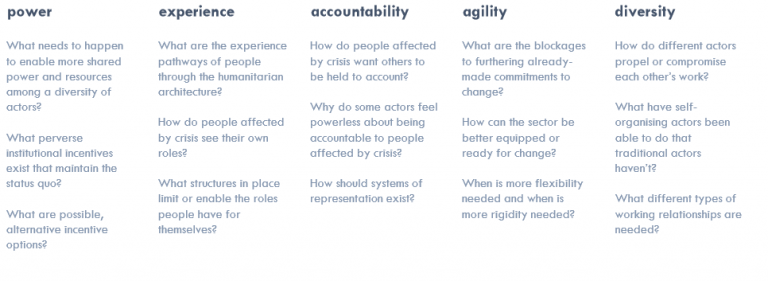
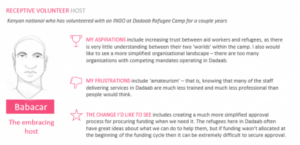
Using individual responses from consultations, the design team develop ed composite images of real user groups or actor groups as personas which served the following functions in the design process: (a) to help build deep empathy and understanding of the pain points and needs of user segments and (b) to help define the design considerations or criteria which best allow for designing a solution that delivers on all users’ need. These personas then served as the launching point for experience maps – rich human stories –presented in ‘first-person’ form, to give the reader the opportunity to empathize with and embed themselves in that user’s thinking and actions.
The Vision
The Design Guide envisions a framework in which future responses are based on a clear understanding of the needs of crisis-affected people and proposes ideas for how humanitarian actors might do better to meet them. Four ideas are prototyped:
- Community-led response fund: communities manage and allocate their own rapid response fund.
- Relief Watch: an independent watchdog provides a rating of performance and aid effectiveness based on user and expert reviews.
- Humanitarian social economy: humanitarian supply chains grow and support community-owned cooperatives.
- United Beyond Nations: affected people connect directly with local, national, international responders and service providers via a networked humanitarian platform.
Each also describes the ‘response functions’ of the international system within those prototypes.
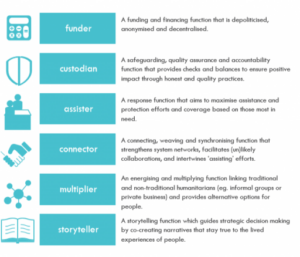
Overall, this design process highlights that a behavioral shift is also needed to transform existing systems/ structures. This requires actors to:
- Think differently: The new humanitarian worldview requires actors to practice what they preach in terms of transparency and accountability – even when politically or temporally inconvenient.
- Speaking differently: New futures embrace an alternative ‘humanitarian lexicon’ that suggests that crisis-affected people play an active (rather than passive) role in their recovery, and that language used is suited to the audience to enable participation from a wider group of actors
- Doing Differently: Furthermore, the new approach requires more day-to-day rituals and habits that incentivize proactive trust-building, reward genuine collaboration, and prescribe complementarity to avoid parallel structures.
For the full report, please see here.
